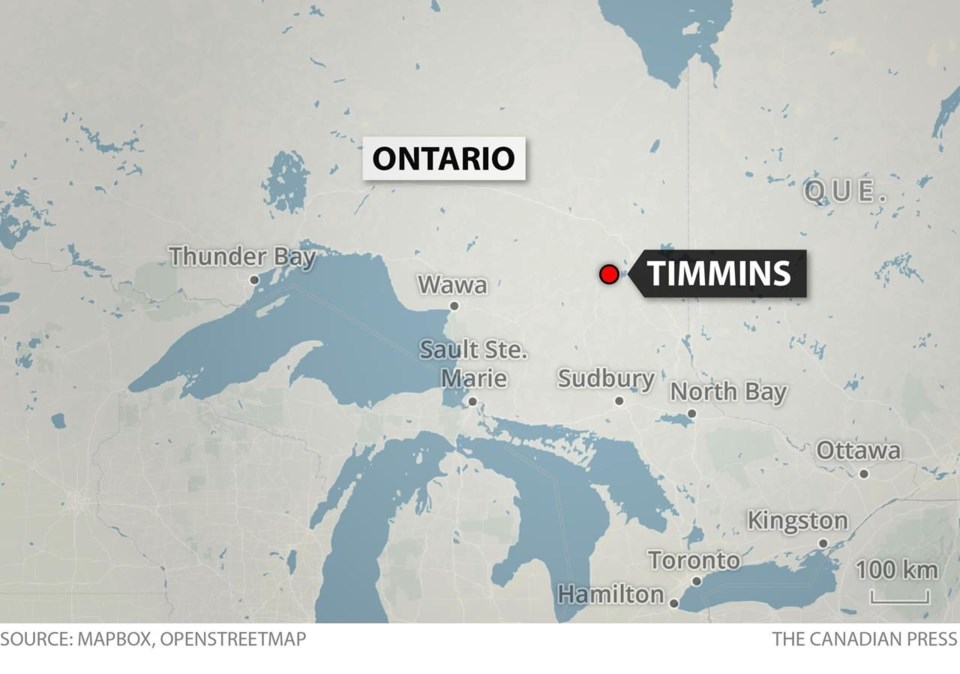The future of a homeless shelter in the northern Ontario city of Timmins is on the line as many residents blame it for a rise in crime while others, including the mayor, say that ongoing social issues and a lack of resources are the real problem.
The relocation of the Living Space emergency shelter will be the subject of an independent review after city council passed a resolution asking the Cochrane District Social Services Administration Board – an agency created by the province and led by elected municipal officials – to consider moving it at least two kilometres away from dense residential or commercial areas.
Timmins Mayor Michelle Boileau said she was the only council member to oppose the resolution because she didn't want to support the narrative that unhoused people and shelters cause problems.
Boileau, who also serves as the chair of the Cochrane District Social Services Administration Board, said the council's July resolution was discussed at a board meeting on Tuesday and the board agreed to comply with the city's request for a review.
She said the board has directed its administration to hire an outside consulting firm to conduct that review to ensure that it's "as objective as possible."
Living Space, a 63-bed shelter described as "the last resort for any people" on its website, is surrounded by residential homes and businesses in the city of approximately 40,000 people.
Among those calling for the relocation of Living Space is Robert Boucher, who started a Facebook group for residents to share their concerns about the shelter's impact on neighbourhood safety. The group has more than 6,300 members.
Boucher, who lives blocks away from the shelter and owns a few short-term rental properties in the area, said there has been an increase in criminal activity in the neighbourhood, including in his backyard, which is adjacent to a walking trail leading to the shelter.
He said area residents have been dealing with more home invasions, theft and assaults, and many of them have been finding human feces and contaminated needles in front of their homes and businesses.
"It's just been crime non-stop, like, every day it's something new," he said in a recent interview.
"It's just been a total nightmare, and it's the same individuals that make Living Space look terrible."
Living Space executive director Kate Durst didn't respond to several requests for comment.
Timmins police community liaison officer Marc Depatie said overall the force has received more property crime calls in the first four months of this year compared to the same period last year.
He said police responded to 830 property crime calls between Jan.1 and April 30 across the city, compared to 700 property crime calls in the same period last year.
However, Depatie said violent crime calls decreased from 340 between Jan. 1 and April 30 last year, to 299 calls in the same period this year.
The city's mayor acknowledged that Timmins is seeing a spike in crime but said it's not a result of the shelter. She instead attributed the problems to an increase in substance abuse, opioid addictions and other social issues.
"There's been a rise in crime all across the city, not just in the one neighbourhood that's adjacent to the emergency shelter," Boileau said.
"I'm sensitive to the fact that homeowners and residents in the city of Timmins are dealing with more frequent issues, more violent incidences, invasions of privacy, home invasions. And it's not right and it will not be tolerated."
But, she said, Timmins lacks "appropriate places" for people to go when they're struggling with a shortage of services such as addiction and mental health supports, treatment programs and transitional housing.
"And so it's easy to kind of just go back into that vicious cycle."
Several northern Ontario cities, including Timmins, have some of the highest opioid mortality rates in the province.
According to preliminary figures released Tuesday from Ontario's coroner's office, Timmins had an 88.7 opioid toxicity mortality rate per 100,000 population in the first three months of this year while the provincial average for opioid-related deaths per 100,000 population was 17.5 in the same period.
Timmins Coun. Cory Robin said Living Space was portrayed as a solution to homelessness when the shelter was established in 2018 as a hub to provide all kinds of services.
"Over time, those programs, those pilots, they all ended, and all of a sudden we're left with less services," he said.
The shelter was moved to its current location in November 2021.
Boileau said it has been "difficult to see" the level of misunderstanding that has surfaced during debates about the shelter, especially when it comes to her role as both mayor and chair of the Cochrane District Social Services Administration Board, which some have suggested presents a conflict of interest.
"I can only be chair of the CDSSAB because I'm an elected official to municipal council. And so I'm not in conflict," she said. "It's actually designed to be that way that the board consists of councillors and mayors from the member municipalities."
The province created district social services administration boards in northern Ontario in the 1990s to act as the upper-tier level of municipal government in order to co-ordinate and deliver social services including housing and emergency medical services.
Cochrane District Social Services Administration Board chief administrative officer Brian Marks said many people have preconceptions about homeless communities.
"It's not a mystery to anybody that homelessness does include a certain element of people who have mental health issues and addictions issues," he said. "But it's also a population that is largely victimized as well."
He said the City of Timmins is trying to make an informed decision moving forward by asking the board to conduct a review.
"Certainly no one would deny that the people that access emergency shelter services need supports," he said.
This report by The 91ԭ�� Press was first published Aug. 6, 2023.
Maan Alhmidi, The 91ԭ�� Press



